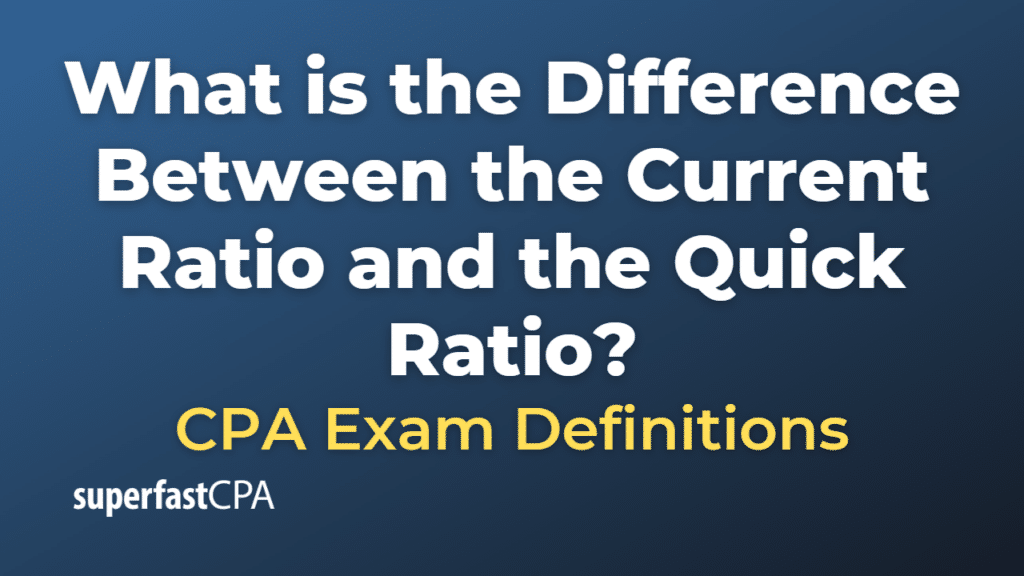Difference Between the Current Ratio and the Quick Ratio
The Current Ratio and the Quick Ratio (also known as the Acid-Test Ratio) are both financial metrics that are used to measure a company’s liquidity, or its ability to meet short-term obligations. However, they differ in the types of assets they consider:
- Current Ratio: The Current Ratio is calculated by dividing current assets by current liabilities. Current assets include cash, cash equivalents, accounts receivable, inventory, and other assets that are expected to be converted to cash or used up within one year. Current liabilities include accounts payable, accrued liabilities, and other debts due within one year. A current ratio of 1 or more indicates that a company has enough current assets to cover its current liabilities.
- Quick Ratio: The Quick Ratio is more conservative and excludes inventory from current assets before performing the same division. The rationale behind this is that inventory may not be easily or quickly converted into cash
Example of the Difference Between the Current Ratio and the Quick Ratio
Let’s consider a hypothetical example with a company “BizCo”:
BizCo’s balance sheet shows:
- Current Assets: $200,000 (of which inventory is $50,000)
- Current Liabilities: $100,000
Current Ratio: The current ratio is calculated as Current Assets / Current Liabilities.
For BizCo, it’s $200,000 / $100,000 = 2.0
This suggests that BizCo has twice as many current assets as current liabilities, indicating strong short-term financial health.
Quick Ratio: The quick ratio is calculated as (Current Assets – Inventory) / Current Liabilities.
For BizCo, it’s ($200,000 – $50,000) / $100,000 = 1.5
Even when inventory is excluded, BizCo still has 1.5 times the amount of ‘quick’ assets needed to cover its current liabilities. This suggests BizCo is in a solid position to cover its short-term obligations, even if it can’t sell its inventory.
While both ratios indicate BizCo’s short-term financial health, the quick ratio provides a more conservative view by assuming that inventory might not be readily converted to cash. This is particularly useful in industries where inventory may be difficult to quickly sell or may become obsolete.













